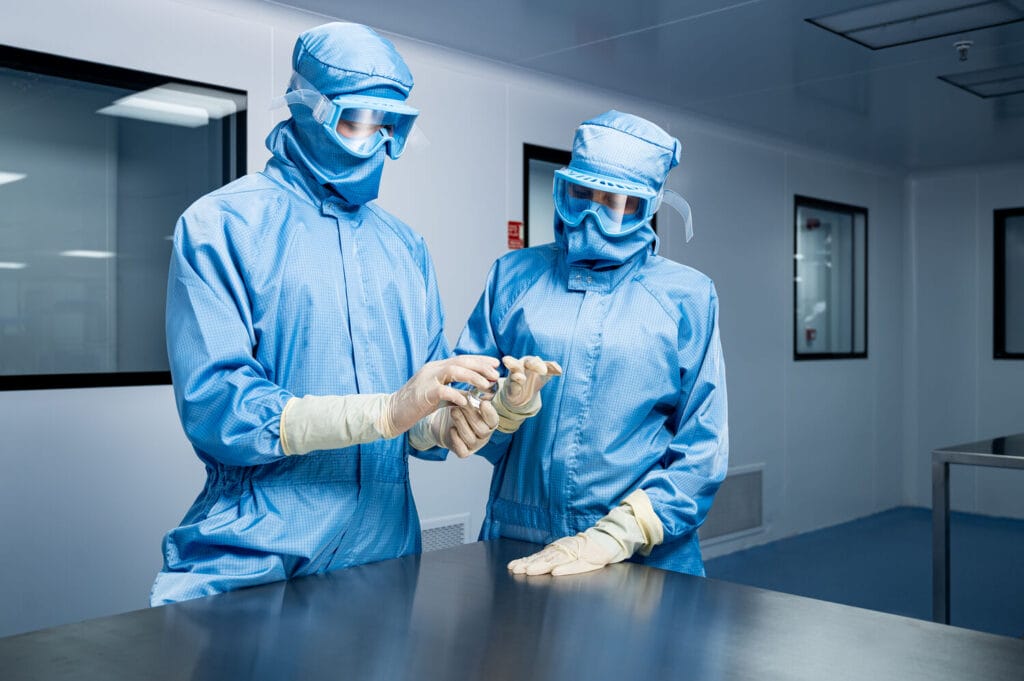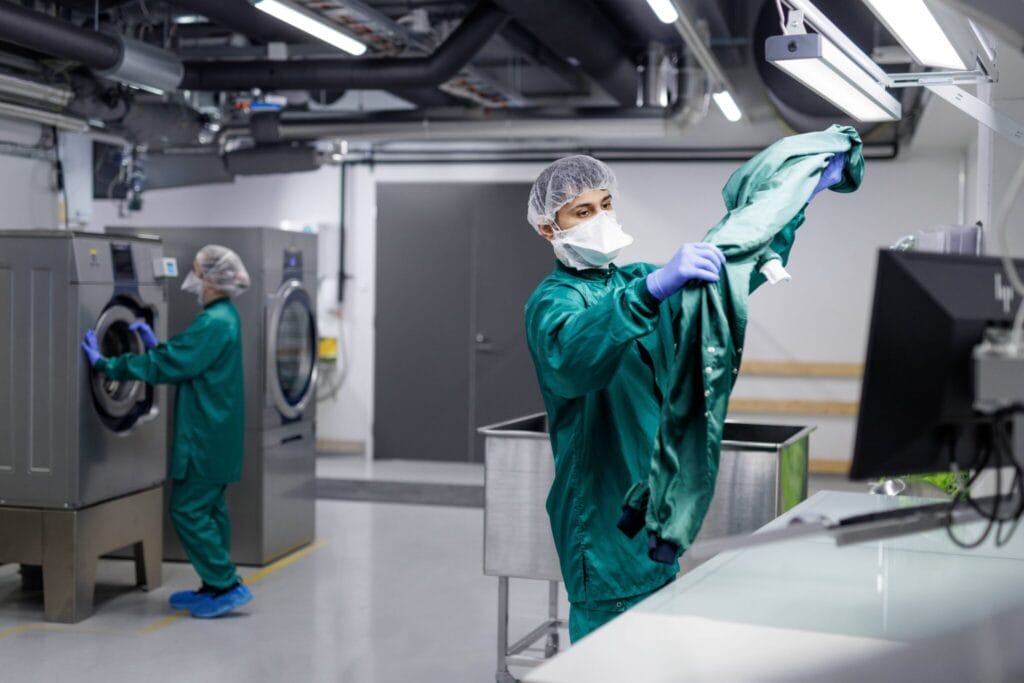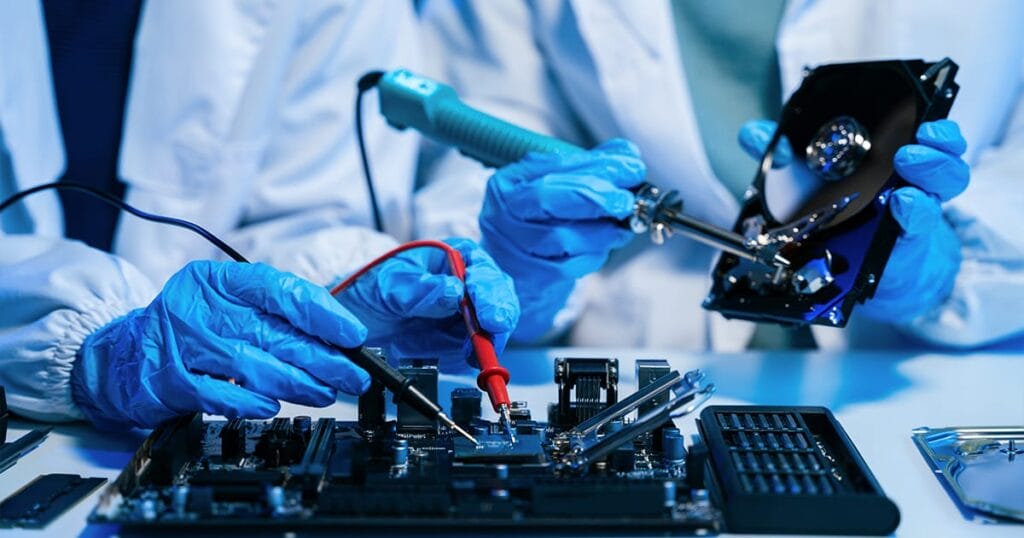
Quality standards for pharmaceutical garments
The pharmaceutical sector stands as a pillar of public health, and behind every sterile product lies a robust framework of regulation, hygiene, and precision. Among the many elements ensuring safety, quality standards for pharmaceutical garments are critically important. These specialised garments serve as a first line of defence in contamination control, supporting both product integrity and personnel safety in cleanroom environments.
India’s pharmaceutical garment industry is maturing rapidly, responding to both domestic and global demands for high-quality, compliant solutions. This article explores how regulatory structures, manufacturing practices, and emerging innovations are shaping this essential aspect of pharmaceutical production.
Quality standards in the pharmaceutical industry
At the heart of pharmaceutical manufacturing is an unwavering commitment to quality assurance. International frameworks such as Good Manufacturing Practices (GMP) set the tone globally, outlining processes that guarantee product safety and efficacy. In India, these are reinforced through national standards and regulations, ensuring alignment with global expectations while maintaining relevance to local operational contexts.
Specifically, quality standards for pharmaceutical garments go beyond aesthetics or durability. These garments must act as reliable barriers against particles and microbes in controlled environments. As such, their design, material, laundering, and lifecycle management must all comply with strict hygiene and performance criteria.
Regulatory bodies and their roles
India’s pharmaceutical garment manufacturers operate under the oversight of key regulatory bodies that drive compliance and uphold product standards.
- CDSCO (Central Drugs Standard Control Organisation) – This body authorises pharmaceutical products and oversees their compliance with drug safety laws, including those related to manufacturing garments used in cleanroom settings.
- BIS (Bureau of Indian Standards) – BIS develops and maintains garment-specific standards, certifying manufacturers who meet rigorous quality benchmarks.
Together, these authorities provide the framework within which garments must be produced, validated, and maintained to ensure safety for users and products alike.
Key Responsibilities
| Organisation | Role in Pharmaceutical Garments |
|---|---|
| CDSCO | Oversees drug manufacturing standards, including cleanroom apparel |
| BIS | Defines technical specifications and grants certifications |
| State FDAs | Conduct local inspections and support enforcement |
Manufacturing processes and compliance
Consistency in quality requires a structured and well-controlled production process. From fabric selection and design to laundry and delivery, pharmaceutical garments must meet cleanroom classification levels and withstand repeated cycles of sterilisation.
At Lindström, we support pharmaceutical companies by offering a validated cleanroom garment service built on:
- ISO 14644-compliant cleanroom laundries (ISO 5–8)
- EN 14065-certified decontamination processes
- RFID-tracked garment lifecycle monitoring via eLindström
- Barrier-washer segregation for soiled and clean textiles
- Auditable documentation to support GMP and Annex 1 expectations
This full-service model ensures that compliance is integrated into every stage of garment management.
Best Practices for Manufacturers
- Define garment lifecycles based on test-based wash and sterilisation limits
- Implement automated garment tracking systems
- Conduct routine audits and microbial validation of laundry cycles
- Train personnel regularly on gowning protocols and contamination risks
Steps to ensure compliance
- Conduct regular audits and inspections of manufacturing facilities.
- Utilize automated systems for tracking garment usage and compliance.
- Invest in continuous training for personnel to meet regulatory standards.
Challenges faced by manufacturers
Despite strong regulatory frameworks and growing expertise, several challenges persist:
- Supply Chain Variability: Inconsistent raw material quality or delays in sourcing can impact garment performance and compliance.
- Technology Gaps: Smaller manufacturers may struggle to invest in the digital systems and classified laundry environments required for high-level compliance.
- Skilled Workforce: Proper gowning and cleanroom discipline require continuous training, which can be resource-intensive.
Addressing these challenges requires both strategic partnerships and investment in long-term capability building.
Future trends in pharmaceutical garment manufacturing
As the pharmaceutical sector in India evolves, the demand for smarter, greener, and more efficient garment solutions is growing.
Key Trends Reshaping the Industry
| Trend | Description | Impact |
|---|---|---|
| Sustainable Practices | Adoption of recyclable, reusable garments and energy-efficient laundry solutions | Reduced environmental footprint and cost |
| Digitalisation | IoT-enabled garment tracking and compliance analytics | Enhanced traceability and operational transparency |
| Modular Laundries | Proximity-based production via on-demand garment hubs | Improved responsiveness and lower lead times |
Lindström is actively investing in these areas, combining textile innovation with digital tools to support customers’ compliance and sustainability goals—without compromising on hygiene or quality.
A future of safer, smarter garments
As India strengthens its position in global pharmaceutical manufacturing, the importance of maintaining high quality standards for pharmaceutical garments cannot be overstated. These garments are vital components of contamination control and product safety.
By aligning with international regulations, embracing digital transformation, and adopting circular economy principles, manufacturers can not only meet regulatory expectations but also lead the way in responsible and future-ready garment solutions.
In this journey, service partners like Lindström are uniquely positioned to offer expert guidance, reliable infrastructure, and scalable solutions—helping companies uphold the highest standards, every step of the way.




